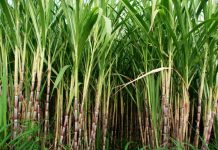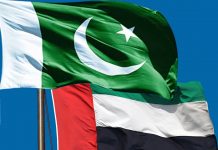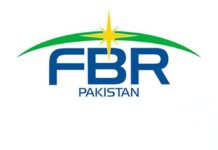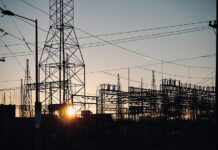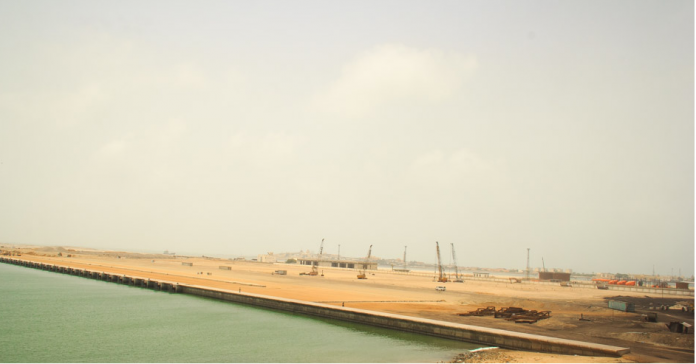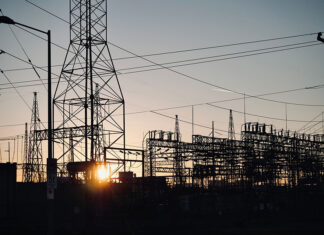- South Asia Pakistan Terminal could more than double the country’s entire handling capacity.
- Bureaucratic delays cost millions in lost opportunity on a project that has been in the works since 1970s.
As one drives through McLeod Road, today’s I. I. Chundrigar Road and Pakistan’s equivalent of Wall Street, one is unlikely to ignore historical landmarks and skyscrapers housing state-of-the-art offices (mostly of large financial businesses) that stretch over 2 kilometers on both sides of this important artery, also referred to as Pakistan’s commercial hub.
By contrast, drive a few yards south, past the Jinnah Bridge – a stone’s throw away from the country’s financial center – one enters old Karachi, which is largely undeveloped, if not the exact opposite of the former. With decaying buildings on its either side, Napier Mole Road – which was built for heavy traffic to and from the port area but didn’t get the much-needed renovation – leads to South Asia Pakistan Terminal (SAPT), the country’s first deepwater container terminal, developed with an investment of $1.4 billion.
On exiting this road towards SAPT or China Port, as the locals refer to it, the traffic reaches a security check post. A police officer greets the driver, the two shake hands and exchange smiles – meanwhile, a 20-rupee bill changes hands – and the vehicle clears the checkpoint to join the Container Port Road (CPR).
About 1.4 kilometers in length, the CPR remains mostly congested due to the movement of heavy traffic: oil tankers to and from oil terminals, blending plants, and refineries located in the same area. With SAPT set to commence operations on August 13, heavy vehicles laden with tonnes of cargo will start moving in and out of the terminal, thus increasing the area’s traffic burden manifold.
However, the dilapidated state of the CPR – a portion of which, along with the adjoining streets, is unpaved – makes it a nightmare for both the truckers and other commuters including SAPT’s staff who face prolonged traffic jams almost every day. Some gridlocks last three to four hours and cause loss of precious labour hours, to say the least.
The dilapidated road is not the only problem facing this multi-million dollar project; the dredging of the water channel (waterway) that ships follow en route to the port has yet to be completed. Dredging is the process of removing sediments and debris from the bottom of sea to avoid risk of grounding for big ships that need a minimum depth of 15 meters to stay afloat.

The incomplete road and sea infrastructure has been a cause of great concern for the investors who don’t want further delays to the project, which was supposed to be operational in 2010, industry sources say.
“The company has paid Rs2 billion in import duties alone for five ship-to-shore (STS) cranes, which haven’t earned them a penny yet,” an official said expressing his frustration over the delay.
As per the agreement signed in 2007, the project is a joint venture of Karachi Port Trust (KPT) and Hutchinson Port Holdings Limited (HPH), the Hong Kong-based parent of SAPT – the latter has invested $600 million to develop the first phase of the terminal while KPT had to sink another $800 million into supporting infrastructure: dredging, breakwaters, key wall and roads.
Spread over 85 hectares, the terminal is designed to accommodate Super Post Panamax ships: large vessels having a capacity of up to 20,000 Twenty-Foot Equivalent Units (TEUs), an industry standard to measure a ship’s cargo carrying capacity. Placed on the mouth of Karachi Harbor, it has a depth of 16 meters and provides the most convenient access to mother ships entering Karachi.
According to industry sources, SAPT has a lot of significance when it comes to meeting the growing shipping needs of Pakistan. This can be an early harvest project from China Pakistan Economic Corridor (CPEC) point of view because Gawadar Port, which lacks supporting infrastructure – power, storage, roads, railways etc – will take a while to fully develop, they say.
With SAPT, Pakistan will be able to accommodate deep draft container ships and reap economic benefits including reduced costs to the country’s importers and exporters and reduction in transit time for shipments, and employment opportunities. The taxation benefits to the local economy have already started to accrue and are envisioned to grow as the traffic for the terminal grows swiftly in the next couple of years, sources say.
Despite the significance attached to this terminal, sources say the KPT has been delaying their part of the project, which may not bode well with the investors who have a positive outlook of Pakistan’s ports – they are targeting to manage 20,000 TEU ships to serve as hub terminal for mother ships coming to Pakistan.
The dredging of the channel leading to the harbor is only 55% complete and still has patches of 9 and 10 meters, sources say. The channel needs to be deepened otherwise no mother ships can make it to SAPT and the road leading to the terminal should also be completed before the project’s commencement, they say – further delay won’t help especially when the two counties are celebrating 65 years of strong diplomatic relations or Sino-Pak friendship.
The delay was due to some technical approvals that had to be sought from various government departments, KPT’s public relations officer said.
“KPT has to follow all government rules and regulations.”
Getting clearance from the traffic police was the main reason for delay in work on the road, the PRO said adding the matter stands resolved now and they have already initiated the process to construct the road from SAPT to Gulbai Bridge and it will be ready before the project’s launch date. He added the KPT has already completed 50 to 60 per cent of dredging and the survey of the deep sea and the remaining work would be completed in two to three months.
Losing millions in opportunity cost:
The place (where SAPT is located) was first considered for a port in 1970s but the development started in 1980s only to be shelved again, sources say. The project was revived again in the 1990s after the World Bank financed a feasibility study to build this port. The project hit snags again because of political instability the country witnessed throughout the decade. The project received another lease on life after former president General (r) Pervez Musharraf proposed its development in 2006.
“Had we completed this project in the past, this could have been Pakistan’s Jebel Ali,” an official said referring to the largest marine terminal of the Middle East, which is located in Dubai and will have a total handling capacity of 22 million TEUs by 2018. “We have been losing millions in opportunity cost.”
Explaining, the official said the royalty from other terminals is $13 per TEU but the starting royalty for this project is $28 per TEU. Secondly, Pakistan’s full capacity is 2.5 million TEUs per year, handled by Karachi International Container Terminal (also an HPH subsidiary), Qasim International Container Terminal and Pakistan International Container Terminal. On the other hand, SAPT alone can manage 3.1 million TEUs. If the project had been completed in 2010, it could have earned the government millions of dollars in royalty, he said.
Arshad Hussain also contributed to this report
The story was originally published in Pakistan Today on June 6, 2016


